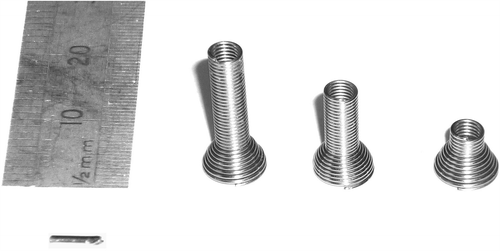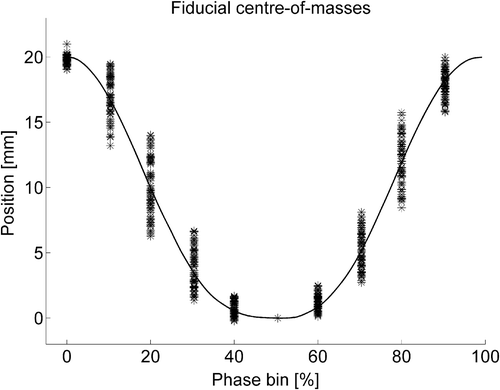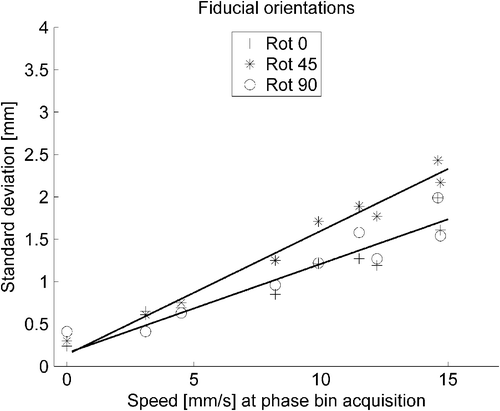Figures & data
Figure 1. Fiducials used for evaluation of detection accuracies in 4DCT and gated IGRT. From left 5 mm Gold Marker seed, 15 mm NiTi-stent, 10 mm NiTi-stent and 5 mm NiTi-stent.

Table I. Correlation between phantom speed values [mm/s], amplitude levels [%] for gated IGRT and phantom physical displacement [mm] relative to the initial setup with amplitude of 0 mm.
Figure 2. Fiducials center-of-masses within the 4DCT normalized to phase bin 50%. The figure represents all fiducials, slice thicknesses and orientations. The solid line indicates the actual physical position of the fiducials within a full cycle.

Figure 3. 4DCT standard deviations of the fiducial position errors relative to phantom speed at center of phase bin acquisition. All three orientations and both slice thicknesses were included with separation into groups of fiducial types. Linear regression for the 5 mm NiTi stent were significant different from the other three fiducials ().

Figure 4. 4DCT standard deviations of the fiducial position errors relative to phantom speed at center of phase bin acquisition. All fiducial types were included with both slice thicknesses with separation into fiducial orientations. Linear regression for fiducial orientated at 45° were significant different from the other two orientations ().

Table II. 4DCT fiducial detection divided into groups of fiducial types, orientations and CT scan slice thicknesses. The fiducial position errors were listed with mean residuals over all CT phases and both slice thicknesses and the 95% CI of the mean and standard deviation (SD) of the group distributions. The mean of fiducial types were for all orientations and both slice thicknesses. Similarly the mean of fiducial orientations were for all types and both slice thicknesses. The mean of slice thicknesses were for all fiducials and orientations. Regression parameters for the standard deviations were listed with 95% CI for fiducial types and orientations with both slice thicknesses included.
